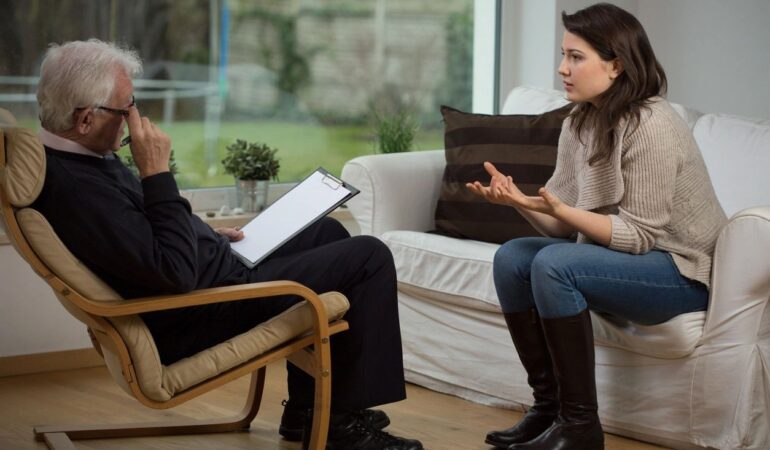Perfectionistic? How to Get Rid of Anger, Even If You’ve Tried Before
Imagine you’re powering through another late night at work, pushing yourself harder because that project just isn’t “good enough” yet. Your mind races with thoughts like, “Why can’t you get this right? You’re falling behind—again.” The tension builds, maybe erupting into anger at yourself or snapping at a colleague. If this sounds familiar, you’re not alone. As a perfectionist or workaholic, you might be trapped in a cycle of self-criticism that feels relentless.
But what if that harsh inner voice isn’t really yours?
In this post, we’ll explore how this voice often stems from a psychological defense called introjection, why it persists, and practical steps to identify and quiet it. Healing starts with understanding—and it can lead to less frustration, reduced burnout, and a life where you don’t have to avoid your deeper emotions.
What Is Your Inner Critic?
For high-achievers like you, the inner critic isn’t just occasional doubt—it’s a constant companion driving perfectionism and workaholism. It shows up as that nagging voice demanding more, criticizing every misstep, and fueling tension that spills into irritability. You might beat yourself up for not meeting impossible standards or lash out at others when things don’t go perfectly.
There’s More Beneath the Anger
If perfectionism has kept you bottling things up, you’re not alone. Therapy can help you understand the roots of your anger—and finally start letting go. Reach out when you’re ready.
Common signs of self-criticism:
- Constant self-doubt, even after successes (e.g., “That promotion? You just got lucky—don’t mess it up now.”).
- Overworking to avoid “failure,” leading to exhaustion and short-tempered reactions.
- Quick anger toward yourself or loved ones, masking deeper fatigue.
- Physical symptoms like tension headaches or insomnia, all tied to the fear of not being enough.
What Self-Criticism Sounds Like
- “Why can’t I ever get this right? I’m such a failure” (when facing a minor setback at work).
- “Everyone else is handling this better than me—I’m just not good enough” (during social comparisons).
- “I should have known better; how could I be so stupid?” (after making a simple mistake).
- “If I don’t push harder, I’ll never succeed, and I’ll disappoint everyone” (fueling workaholism).
- “Look at me, messing up again—no wonder no one takes me seriously” (in moments of self-doubt about personal relationships).
This critic keeps you in survival mode, but it’s often more than just habit—it’s a deeply ingrained defense mechanism known as introjection, and it’s keeping you stuck in anger.
Self-Criticism Keeps You Stuck in Anger
That relentless self-criticism isn’t just exhausting—it directly fuels the anger and stress boiling inside you, directed at yourself and spilling over onto others. Picture this: a deadline slips, and instead of grace, you lash out internally with “You’re useless—why can’t you handle this?” This self-directed fury builds resentment, making you snap at colleagues or loved ones over small things, all while the underlying stress festers.
It’s a vicious cycle where the critic amplifies every flaw, turning minor frustrations into explosive anger, leaving you isolated and burned out. The pain is real: it erodes your relationships, heightens anxiety, and keeps you trapped in a loop of self-sabotage, where rest feels impossible because vulnerability means admitting “weakness.”
But here’s why it persists—
This pattern often ties back to a psychological defense called introjection, where we internalize critical voices from our past, like those from parents or authority figures, and make them our own. Think of it as swallowing their judgments whole, turning them into your inner monologue.
Introjection acts like a shield: it distracts from deeper emotions like sadness or overwhelm by redirecting energy into self-blame or overachievement. You might notice this when a small setback spirals into self-attack, keeping true vulnerability at bay.
In essence, introjection functions like this:
- It redirects energy into self-blame or overachievement, shielding you from the raw ache of sadness or exhaustion.
- It offers a false sense of control— like thinking, “If I just push harder, I can outrun this discomfort.”
- Over time, it sustains workaholism as a numbing strategy, but it heightens frustration when life doesn’t align with its rules.
These internalized rules keep you stuck. And yes, it can explain why managing stress and anger feels so elusive.
Why We Cling to the Critic: Staying Connected and Safe
It might sound counterintuitive, but holding onto this critical voice is often a way to maintain attachment to important figures from your past, like mom or dad. If they were demanding or critical—perhaps pushing you to excel at all costs—you might have internalized their voice as a form of loyalty or safety. Rejecting it could feel like losing that connection, even if it was painful.
For instance:
- The voice echoes a parent’s high expectations, keeping their “presence” alive in your mind.
- It provides a twisted sense of security: “If I criticize myself first, no one else can hurt me.”
- This attachment sidesteps the grief of unmet needs, like the sadness of never feeling truly accepted.
As odd as it seems, this mechanism helped you survive back then. But now, it fuels the very burnout and irritability you’re trying to escape.
If you’re reading this and thinking, “This sounds like pop psychology nonsense—I’m just hard on myself because I care about doing well,” I get it. Perfectionists often dismiss interpretations like introjection as overly analytical or irrelevant. After all, you’ve built your success on self-discipline, and admitting a “defense mechanism” might feel like an excuse. You might even feel resistant, wondering if this is just another thing to “fix” perfectly.
That’s a normal reaction—your inner critic is probably already piping up, saying it’s all too touchy-feely. But here’s the thing: acknowledging this doesn’t mean you’re broken. It’s a sign of strength to question the voice that’s been running the show. Many clients start out skeptical, only to discover how liberating it is to see the critic for what it is.
The Power of Identifying Your Inner Critic: The Key to Overcoming Anger and Stress
Here’s the game-changer: Simply identifying this voice as separate from your true self is incredibly powerful. It’s the first step to dismantling the cycle of self-criticism, workaholism, and bottled-up frustration. When you recognize introjection at work, you start to see how much of your burnout is an avoidance tactic—pushing away sadness because, in the past, it wasn’t safe to feel it. Maybe emotions were dismissed or punished, so you learned to armor up with achievement.
At Here Counseling, we’ve seen this realization transform lives. Clients who once raged at minor setbacks or buried themselves in work begin to release that tension. The frustration softens, burnout eases, and they reclaim space for genuine rest and joy. It’s not about erasing the voice overnight but understanding it’s not the whole truth about you.
Step-by-Step: Personifying Your Inner Critic to Set It Free
To make this tangible, one key exercise is to personify the voice—give it a form outside yourself. This helps externalize it, making it easier to challenge and link back to its origins. Here’s how to start:
- Visualize It: Close your eyes and imagine the critic as a character. Is it a stern judge, a nagging parent figure, or something abstract like a dark cloud? Note its tone, appearance, and how it makes you feel. This separation shows it’s not “you”—it’s an echo. What is it saying?
- Draw or Describe It: Sketch the critic or write a detailed description. Include linked memories—e.g., “This voice sounds like Dad when he said I wasn’t trying hard enough.” Sharing this in therapy amplifies the insight.
- Confront It: Once personified, respond kindly: “I hear you over there. Now how do I feel about being spoken to this way? What would actually feel right to me?” Over time, grows our emotional awareness and flexibility, allowing burnout and frustration to fade as you process the underlying emotions.
FAQ on Self-Criticism
What is introjection in psychology?
Introjection is a defense mechanism where individuals internalize external critical voices, often from childhood, turning them into their own inner critic to avoid deeper emotions like sadness and maintain a sense of attachment or control.
How does self-criticism lead to anger and burnout?
Self-criticism amplifies flaws and redirects vulnerability into self-blame, creating a cycle of resentment that spills into anger toward oneself and others, leading to exhaustion, isolation, and burnout from constant overachievement.
What are signs of an overly critical inner voice?
Signs include constant self-doubt after successes, overworking to avoid failure, quick anger masking fatigue, and physical symptoms like headaches or insomnia tied to fears of inadequacy.
Can I overcome my inner critic on my own?
Yes, start by personifying the voice through visualization, journaling, or drawing to externalize it, then challenge it kindly; however, therapy can accelerate progress by addressing underlying traumas safely.
How does therapy help with self-criticism?
Therapy uncovers introjection’s roots, builds emotional awareness, and teaches tools like somatic practices to replace self-blame with compassion, reducing anger and burnout for more balanced living.
You’ll actually get more done… when you let go of self-criticism
You can finally address your anger, burnout, and frustration. At Here Counseling in Pasadena, we do this somatic and relational work to make vulnerability feel safe—leading to less workaholism and more balanced living.
And, to speak to your perfectionistic self: you’ll actually get more done. I promise. From helping many high-achievers like you, the self-critical voice is an albatross you carry with you, impeding what would otherwise be a much more energized, engaged experience of your work and relationships. You can actually do more and better work when you can stop white-knuckling your day and access a more playful emotional self.
Ready to quiet that critic and reclaim your peace? Explore therapy tailored for high-achievers like you. Contact Here Counseling today to schedule a session. Healing is possible, and you deserve it.






